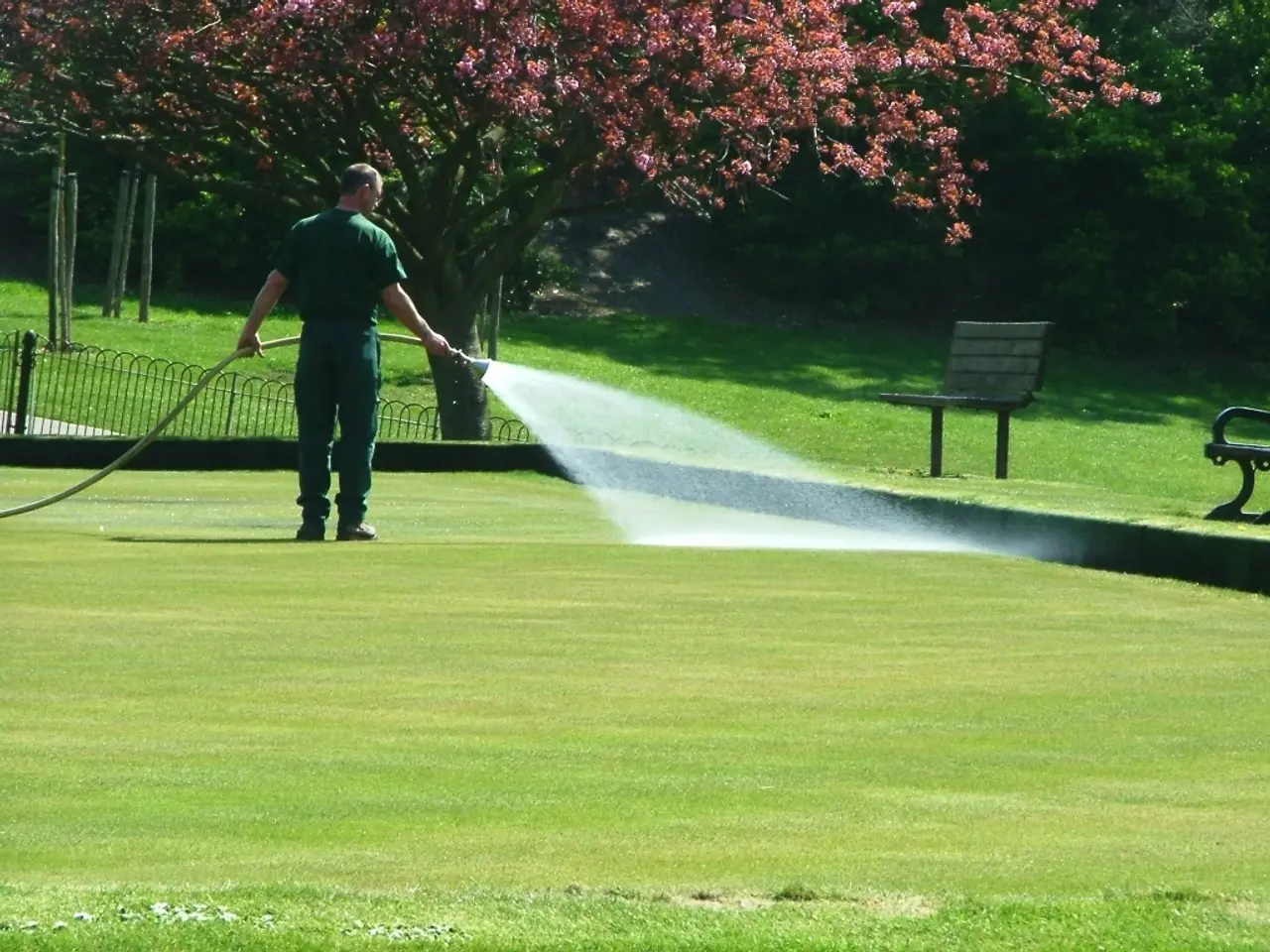Climate-adaptive irrigation: Schlosspark Rumpenheim undergoes eco-friendly adjustments
The city of Offenbach is set to equip Rumpenheim Castle Park with a sustainable irrigation system, a project aimed at conserving water resources and protecting the historic park from the long-term effects of climate change.
Details
The system will primarily use renewable water sources, such as rainwater harvesting and groundwater, minimising the use of potable water. Smart irrigation technology with sensors will monitor soil moisture and weather conditions, enabling efficient watering schedules. The infrastructure includes underground irrigation pipes, automated valves, and possibly solar-powered pumps.
Funding
The project is typically funded through a combination of municipal budgets allocated by Offenbach city authorities. Additional support may come from environmental grants, regional government subsidies, and EU funds dedicated to sustainable urban development and water management. Sometimes, private sponsorships or partnerships with environmental organisations help supplement funding.
Progress
Initial phases involve assessment and planning, including soil studies, water source analysis, and design approval. Implementation consists of installing infrastructure and technology components, often carried out in stages to minimise disruption to the park. Periodic progress reports to the city council and the public keep stakeholders informed.
Key Features
- The core of the new system will be a cistern with a capacity of 60 cubic meters, collecting rainwater from surrounding rooftops.
- For dry periods, a groundwater well is planned to fill the cistern as needed.
- An approximately 1,000-meter-long pipeline will transport the water to 13 collection points in the park.
- Excess water will seep into the ground through a rigol system to form new groundwater.
Participation
Only part of the owners' associations of the castle could be convinced to integrate their roofs into the system. The castle church, mausoleum, volunteer fire department, and the "Yellow House" will be used instead. There is a possibility that parts of the east wing of the castle may be connected to the system at a later date if there is a future agreement.
Cost
The total costs of the sustainable irrigation system project in Rumpenheim Castle Park are estimated at 800,000 euros.
Timeline
Construction work on the irrigation system is scheduled to begin in the summer of 2025. The city will regularly update residents about the progress of the construction work. The city council has approved the project, and the final approval will be given at a meeting on January 30.
Revitalisation
Around 100 new heat and drought-resistant trees will be planted in the park to revitalise it. These new trees will require intensive irrigation for the first five years to establish themselves.
For precise and updated information, contacting the Offenbach city administration or the parks department directly is advisable, as project specifics and timelines can evolve.
- What kind of infrastructure will the Rumpenheim Castle Park in Offenbach adopt to conserve water resources and mitigate the effects of climate change? The park will primarily employ a sustainable irrigation system, utilizing renewable water sources such as rainwater and groundwater, along with a large cistern, groundwater well, sensors, smart irrigation technology, underground pipes, automated valves, and potentially solar-powered pumps.
- What funding sources will contribute to the successful implementation of the sustainable irrigation system at Rumpenheim Castle Park? The project will receive funding through municipal budgets, environmental grants, regional government subsidies, EU funds, sometimes private sponsorships, and partnerships with environmental organizations.
- Which parts of the Rumpenheim Castle will be integrated into the sustainable irrigation system, and what impact will it have on the park's revitalization? Utilizing buildings like the castle church, mausoleum, volunteer fire department, and the "Yellow House," along with the irrigation system, will significantly help the park's revitalization by planting around 100 new heat- and drought-resistant trees, requiring intensive irrigation for their initial five years.




